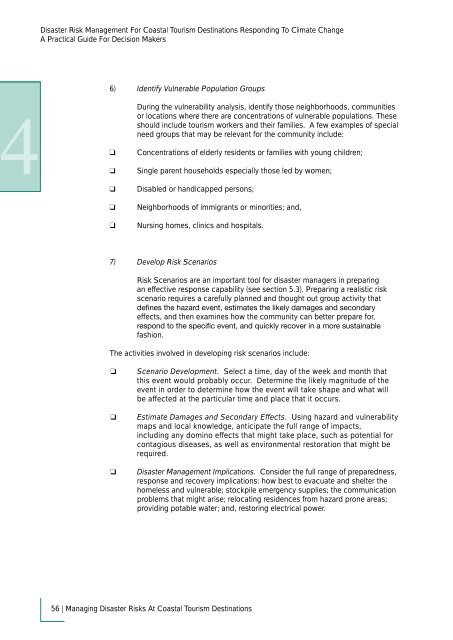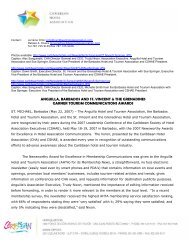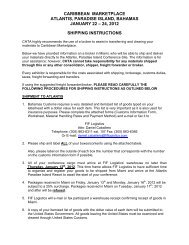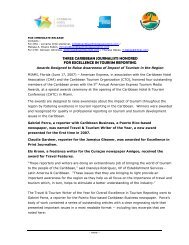Disaster Risk Management for Coastal Tourism - Caribbean Hotel ...
Disaster Risk Management for Coastal Tourism - Caribbean Hotel ...
Disaster Risk Management for Coastal Tourism - Caribbean Hotel ...
Create successful ePaper yourself
Turn your PDF publications into a flip-book with our unique Google optimized e-Paper software.
<strong>Disaster</strong> <strong>Risk</strong> <strong>Management</strong> For <strong>Coastal</strong> <strong>Tourism</strong> Destinations Responding To Climate Change<br />
A Practical Guide For Decision Makers<br />
6) Identify Vulnerable Population Groups<br />
During the vulnerability analysis, identify those neighborhoods, communities<br />
or locations where there are concentrations of vulnerable populations. These<br />
should include tourism workers and their families. A few examples of special<br />
need groups that may be relevant <strong>for</strong> the community include:<br />
<br />
<br />
<br />
<br />
<br />
Concentrations of elderly residents or families with young children;<br />
Single parent households especially those led by women;<br />
Disabled or handicapped persons;<br />
Neighborhoods of immigrants or minorities; and,<br />
Nursing homes, clinics and hospitals.<br />
7) Develop <strong>Risk</strong> Scenarios<br />
<strong>Risk</strong> Scenarios are an important tool <strong>for</strong> disaster managers in preparing<br />
an effective response capability (see section 5.3). Preparing a realistic risk<br />
scenario requires a carefully planned and thought out group activity that<br />
<br />
effects, and then examines how the community can better prepare <strong>for</strong>,<br />
<br />
fashion.<br />
The activities involved in developing risk scenarios include:<br />
<br />
<br />
<br />
Scenario Development. Select a time, day of the week and month that<br />
this event would probably occur. Determine the likely magnitude of the<br />
event in order to determine how the event will take shape and what will<br />
be affected at the particular time and place that it occurs.<br />
Estimate Damages and Secondary Effects. Using hazard and vulnerability<br />
maps and local knowledge, anticipate the full range of impacts,<br />
including any domino effects that might take place, such as potential <strong>for</strong><br />
contagious diseases, as well as environmental restoration that might be<br />
required.<br />
<strong>Disaster</strong> <strong>Management</strong> Implications. Consider the full range of preparedness,<br />
response and recovery implications: how best to evacuate and shelter the<br />
homeless and vulnerable; stockpile emergency supplies; the communication<br />
problems that might arise; relocating residences from hazard prone areas;<br />
providing potable water; and, restoring electrical power.<br />
56 | Managing <strong>Disaster</strong> <strong>Risk</strong>s At <strong>Coastal</strong> <strong>Tourism</strong> Destinations








